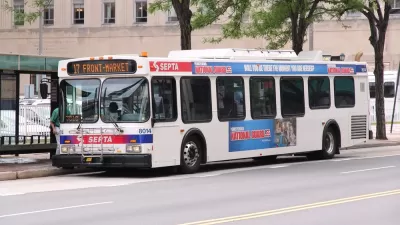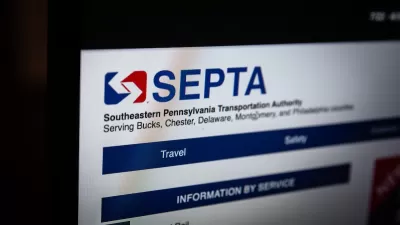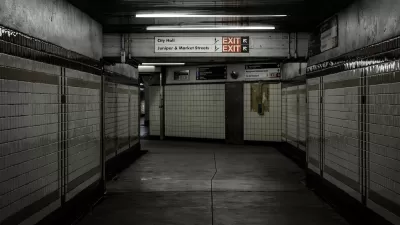Over the last two decades, SEPTA has transformed itself from debt-mired subject of federal investigation to "the best damn transit agency in the U.S. of A." Dan Geringer explores how the agency's chairman has turned the ship around.

By completely changing the office and business culture of the Southeastern Pennsylvania Transportation Authority, Pat Deon, chairman of SEPTA's board of directors, has executed one of the most remarkable transformations in transit governance.
When Deon joined the board in the mid-1990s, "The perception of SEPTA was that it was fat, inefficient, slothful, a black hole into which money was being poured," says Michael J. O'Donoghue, a board member for 18 years before retiring in 2012. But under Deon's leadership, SEPTA has not once run up a deficit, and "has been audited by government officials more than a dozen times and has come up lean and clean," writes Geringer. Last year, the agency was recognized by the American Public Transportation Association (APTA) with the Outstanding Public Transportation System Achievement Award - "the Oscar of the subway/bus/trolley world".
"SEPTA's chief financial officer, Richard Burnfield, said the Deon-era board's commitment to running SEPTA like a business with balanced budgets has attracted hundreds of millions of dollars in government funding that riders enjoy through new Silverliner V regional-rail cars ($330 million), 440 new hybrid buses ($232 million) and beautifully rebuilt subway stations such as Spring Garden and Girard ($30 million)."
"When I first came here, this was just a pitiful operation," Deon said. "For myself and the board, it was like turning around an ocean liner. But we did it."
FULL STORY: How chairman got SEPTA on the track to become No. 1 transit agency

Manufactured Crisis: Losing the Nation’s Largest Source of Unsubsidized Affordable Housing
Manufactured housing communities have long been an affordable housing option for millions of people living in the U.S., but that affordability is disappearing rapidly. How did we get here?

Americans May Be Stuck — But Why?
Americans are moving a lot less than they once did, and that is a problem. While Yoni Applebaum, in his highly-publicized article Stuck, gets the reasons badly wrong, it's still important to ask: why are we moving so much less than before?

Using Old Oil and Gas Wells for Green Energy Storage
Penn State researchers have found that repurposing abandoned oil and gas wells for geothermal-assisted compressed-air energy storage can boost efficiency, reduce environmental risks, and support clean energy and job transitions.

Poorest NYC Neighborhoods Pay Price for Delivery Boom
The rise of ‘last-mile’ e-commerce warehouses — and their attendant truck traffic and air pollution — is disproportionately impacting the most historically disadvantaged parts of the city.

Greening Oakland’s School Grounds
With help from community partners like the Trust for Public Land, Oakland Unified School District is turning barren, asphalt-covered schoolyards into vibrant, green spaces that support outdoor learning, play, and student well-being.

California Governor Suspends CEQA Reviews for Utilities in Fire Areas
Utility restoration efforts in areas affected by the January wildfires in Los Angeles will be exempt from environmental regulations to speed up the rebuilding of essential infrastructure.
Urban Design for Planners 1: Software Tools
This six-course series explores essential urban design concepts using open source software and equips planners with the tools they need to participate fully in the urban design process.
Planning for Universal Design
Learn the tools for implementing Universal Design in planning regulations.
Heyer Gruel & Associates PA
City of Moreno Valley
Institute for Housing and Urban Development Studies (IHS)
City of Grandview
Harvard GSD Executive Education
Salt Lake City
NYU Wagner Graduate School of Public Service
City of Cambridge, Maryland





























